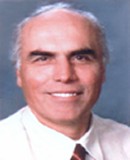

Plenary Lecture
Electro Magnetic Stimulatin for Assisting Physiotherapy for Patients Suffering from Cerebral Palsy

Associate Professor Selcuk Comlekci
Department of Electronics and Communication Engineering
Faculty of Engineering
Suleyman Demirel University
TURKEY
E-mail: selcukcomlekci@sdu.edu.tr
Abstract: Cerebral Palsy (CP) neuromuscular diseases all over the world are also prevalent in childhood, causes permanent disability. Nowadays, there seem many new electro stimulation techniques on the cerebral muscles. Stimulation electrodes placed on the surface of the muscles provide low-frequency electrical currents with the help of spasticity. Another technique is trans cranial magnetic stimulation (TMS). Repetitive magnetic stimulation, used in recent years significant but temporary improvement in spasticity is a method that enables an electro stimulation. Although not yet completed this non-invasive method, in the future be used widely in the treatment of spasticity. Repetitive magnetic stimulation is given by the pads around the head, or particular area of cortex of the brain. This method uses fixed specific frequency magnetic fields. Meaningful relaxations are observed in muscle strain in patients after application of magnetic stimulation with its effect ongoing weeks, without any medication. It is well-known that Extremely Low Frequency (ELF) (0.1-300 Hz) or Low Frequency (LF) (up to 3.5 kHz) pulsed frequencies have beneficial effects on healing mechanisms to living tissues. ELF PEMF has a potential effects on bone and bone morrow tissue whereas LF PEMF can be used in order to nerve stimulation, cancer therapy, etc. Non-ionizing radiation may be useful by using appropriately. Specific frequencies, densities, and setups should be studied in cooperation with multi-disciplinary. In cerebral palsy treatment, appropriate safety precautions should be taken by a biomedical engineer and non-ionizing radiation hazard signs displayed prominently in the relevant work areas. For ensuring the safety of personnel, it may be necessary to carry out an Electromagnetic field survey to determine the level of RF and microwave fields in the work areas. Repetitive TMS intrinsically more powerful technique with attendant greater concerns for side-effects The measured levels should be lower than the specified limits. llustrative cases utilizing navigated TMS are shown in presurgical mapping of the motor cortex, in therapy for depression, and in the follow-up of recovery from CP.
Brief Biography of the Speaker: Selcuk Comlekci received his B.S. degree in Electrical Engineering from Hacettepe University, in 1980, and M.Sc. degree from Science Inst?tute of Suleyman Demirel University in 1996 and received his Ph.D. degree in Electrical and Electronics Engineering from Sakarya University, Turkey, in 2002. His research interests are RF Measurement and Instrumentation, Neuro-Fuzzy Applications, Soft Computing Techniques, Electromedical Design, EMI/EMC Applications, and general Biomedical Engineering. From 1982 to 1996, he was a Senior Engineer in Official Duties. Dr. Comlekci is associate professor at Department of Electronics and Communication Engineering, Suleyman Demirel University, Isparta, Turkey. He gives much kind of lectures both for undergraduate and graduate at his department. He is Senior Member of IEEE (2007), URSI, and BIOELECTROMAGNETICS Societies. Also he has current membership in IEEE, EMC Society and EMO (Turkish Chamber of Electrical Engineering). IEEE, ICES (International Comittee on Electromagnetic Safety) chose him as a member of ICES TC95 Main Committee in 2008. He is the third member from Turkey in this comittee. He is Independent Expert for FP7 (Independent Expert, FP7, Cordis, Expert Management Module, Number:EX2002B014021). He handle "Excellent Participant Award", '95 TCDC SHP Training Workshop (Funded by UNDP), 1995. He placed in “Listing in IBC Outstanding Scientists of the 21st Century, Inaugural Edition, 2007” and “Listing in Marquis Who's Who in Science and Engineering, 9th Edition, 2006-2007”. Dr. Comlekci has founded the first Turkish Chapter of IEEE, Engineering in Medicine and Biology Society in 2005. He is currently Chair of the Chapter. He has published nearly 100 technical papers in journals and conference proceedings. He is conducting national and international Research Projects in Biomedical Engineering. He worked at Arizona State University, USA, Ira A. Fulton School of Engineering, Harrington Department of Bioengineering as an Adjunct Faculty and Visitor Scientist in Dr. Akay’s Lab during 2007 for post-doc study.